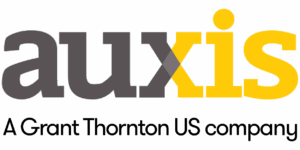In brief:
- U.S. companies have $1.76 trillion in untapped working capital tied up in inefficient receivables, with Days Sales Outstanding (DSO) making its largest jump since 2008.
- Accounts receivable best practices are key to reducing DSO and optimizing cash flow — referring to the standardized processes, tools, and strategies that organizations use to improve the efficiency, accuracy, and speed of collecting payments from customers.
- Standardized, centralized AR workflows reduce DSO by an average of three days, improve dispute resolution by 59%, and can release up to 30% of working capital within weeks.
- Implementing AI and automation are a top CFO priority in 2025, yet many AR teams still rely on manual processing.
- AR is the second-most performed function at shared services globally, with Latin America emerging as a preferred destination for accessing top finance talent, real-time collaboration, and robust digital capabilities.
Amid ongoing inflation and economic unpredictability, companies are under pressure to operate leaner. Following accounts receivable best practices is key to steady cash flow, reducing risk by ensuring your business can weather financial pressures with the liquidity you need to operate and invest.
But many accounts receivable (AR) departments struggle with manual invoicing, inconsistent follow-ups, unresolved deductions, and siloed workflows. These inefficiencies delay collections, inflate Days Sales Outstanding (DSO), and strain cash flow and customer relationships.
On average, middle-market companies lose 3.1% of their revenue – roughly $14 million – to payment collection issues, according to a 2025 PYMNTS.com report. For smaller organizations the percentages tend to be even higher, and the financial impact even more significant.
Forward-thinking finance leaders are shifting their approach. By implementing AR best practices, embracing AI and automation, and centralizing high-volume processes with a quality nearshore AR provider, they’re transforming AR from a transactional burden into a function that improves accuracy, drives liquidity, reduces write-offs, and builds trust.
AR best practices your business needs to improve cash flow
Here are seven proven accounts receivable best practices that can help your business boost performance, minimize risk, and unlock the full potential of your Order-to-Cash (O2C) process.
1. Standardize your AR processes and workflows
One of the biggest obstacles in AR is the lack of standardization. Without clear and consistent workflows, teams spend hours tracking documents, resolving avoidable errors, and reacting to disputes. All of these issues delay collections and increase the risk of lost revenue.
Standardizing workflows across invoicing, collections, and dispute resolution creates structure and accountability. It ensures every department, including finance, sales, and customer service teams, follows the same steps, timelines, and escalation paths.
Research backs this up.
- Deloitte recommends implementing standardized AR processes to improve accuracy and cash flow and reduce write-offs (Strategies for Optimizing Your Accounts Receivable).
- A 2025 Shared Services & Outsourcing Network (SSON) global report found that centralized AR processes reduced DSO by three days, improved dispute resolution by 59%, and cut aged debt by 75%.
- McKinsey reports that mapping out and standardizing AR procedures can improve receivables-related working capital by up to 30% within weeks (Gain Transformation Momentum by Optimizing Working Capital).
Shared services is a proven model for achieving these results. Consolidating high-volume processes like O2C at a centralized location ensures greater consistency, improves governance, increases digitization, and enables economies of scale that boost efficiency and lower costs.
Not surprisingly, AR is the second-most performed function by shared services operations globally and, increasingly, organizations are turning to nearshore advantages like highly skilled finance talent, real-time collaboration, and lower turnover to transform their AR operations.
Order-to-Cash processes are successfully delivered by 90% of shared services in Latin America, compared to 63% of shared services globally, according to the State of the GBS & Outsourcing Industry in Latin America report by SSON Research & Analytics and Auxis. Tech adoption is also 9% higher at LATAM shared services than other regions across critical productivity and efficiency tools like automation, with more than 80% of shared services and enterprise leaders ranking Latin America’s innovation mindset as a top factor for choosing the region over Asia or Europe, the report found.
Now, standardizing AR processes may cause some “heartburn” in certain parts of the organization. Often, the sales team will want as much latitude as possible to customize client invoices, make pricing and discount changes (often without notifying the AR department until after the invoice has been issued and the payment and collections process has begun), and make other accommodations for their customers.
This “creative selling” process may make their lives easier, but it makes things much more difficult for AR. The business will need to decide on how and where to draw the line on creative selling to get the benefits of a more efficient accounts receivable process.
Learn how a global cosmetics brand reduced overdue invoices by 55% after centralizing AR through a nearshore shared services model.
2. Leverage AI and automation
Manual AR tasks are time-consuming and prone to errors. Automating processes improves AR accuracy and speed, with 69% of CFOs ranking AI and automation implementation as a top organizational strategy in 2025, according to Grant Thornton’s 2024 Tech CFO survey.
That can mean maximizing automation capabilities in your enterprise resource planning (ERP) system or applying automation tools to workflows, manual data entry, payment matching, e-invoice generation, receipt processing, and more. Creating automated self-service portals and encouraging electronic payments further increase AR efficiency, eliminating manual inputs and steps.
The Hackett Group found organizations that automate their AR function reduce manual work, lower costs, and improve on-time collections by up to $7 million for mid-sized firms (2024 Customer-to-Cash Receivables Software report).
Finance leaders are also starting to explore the immense potential of AI to improve AR effectiveness – personalizing collections strategies, driving efficient deductions processing, supporting real-time, predictive analytics that improve cash flow forecasting, and more.
Some core AR areas that benefit from automation include:
- Invoicing: Automate invoice generation and delivery using real-time customer and transaction data, as well as integration of payments data into ERP systems.
- Payment reminders: Use automation to schedule personalized reminders based on payment history and customer risk level.
- Cash application: AI-powered tools match payments to invoices using reference numbers and amounts, while automation can also improve the speed and accuracy of payment clearing and reconciliation.
Here’s the challenge: 86% of finance leaders say they have achieved no significant value from their AI investments – struggling with lack of technical skills within finance and uncertainty as to where or how to begin, according to Gartner’s 2025 Leadership Vision for CFOs report. More than 85% of enterprises also say they are not prepared to handle the risks necessary to achieve the higher-order rewards of the technology, Everest Group’s priorities survey found.
Not surprisingly, a whopping 81% of finance functions are adopting or planning to adopt AI as part of their outsourced services, looking to quality providers to offer instant access to the talent and tools they need to achieve sustainable success (Deloitte Global Outsourcing Survey 2024).
3. Implement a proactive collections strategy
Invoice errors and missing information often cause delays, while delinquent accounts and customer defaults become more common in an uncertain economy. Early outreach gives customers time to clarify issues, update account details, or request flexible terms.
Integrating collections earlier in the sales cycle and assessing credit risk in real time reduces average delinquency by 8.4 days and improves DSO (The Hackett Group’s Accounts Receivable Moves the Top of the CFO Agenda).
Some of the biggest accounts receivable collections best practices involve establishing clear escalation paths and setting follow-up cadences with CRM or billing tools. For instance, trigger an automatic reminder on the day a payment is missed and follow up weekly until the issue is resolved.
Also, adopt a tiered collection strategy based on customer risk level, outstanding balance, relationship or payment history, and invoice aging.
- High-risk accounts should receive earlier, more frequent follow-ups.
- Low-risk customers often only need a single reminder.
Also, educate customers on why reminders are helpful and emphasize your team’s availability to help. Aligning on communication preferences and keeping the conversation collaborative helps complete the AR cycle faster, without compromising customer relationships.
4. Make payments easy and flexible
A complex or outdated payment process slows collections and frustrates customers. Simplifying how customers make payments is an essential AR collections best practice, helping to enhance cash flow and reduce disputes.
- Automate billing and payment systems to streamline payment tracking and reduce errors and manual reconciliation.
- Use electronic invoicing that links directly to payment portals to enhance convenience. Your AR team can also easily track and follow up on payments, reducing delays and improving cash application accuracy.
- Set clear payment terms on every invoice to avoid confusion and reduce overdue payments.
- Incentivize early payments by offering discounts (e.g., 2% off payments made within 10 days).
- Be flexible with terms based on specific customer needs. For instance, adjusting from Net 30 to Net 45 payment terms can retain cash-strapped customers.
- Offer online payment options, including ACH transfers, credit cards, and digital wallets such as PayPal, Apple Pay, and Google Pay.
- Require remittance advice from customers or automate remittance processing through electronic data interchange (EDI) to minimize misapplied payments and follow-ups.
A lot of these steps will require the cooperation and support of your customers – often easier said than done! Be sure to inform them of the benefits (to them) of these changes and reinforce the message (with incentives if possible).
Making these changes and getting customers to adopt them will take time, so plan for a transition process and some confusion and/or resistance. Be consistent in your handling of your customers, do not make special accommodations if possible. In the end, these changes should work to everyone’s benefit and that is the message that should be consistently conveyed.

5. Create a clear process for deductions management
Billing discrepancies are major contributors to delayed payments and lost revenue in AR. When teams have to chase documentation to validate disputes, for example, DSO climbs.
To resolve issues efficiently and protect cash flow:
- Establish a centralized dispute resolution team with clear roles, timelines, and standardized codes. Steps can include reporting, investigation, resolution, and follow-up.
- Separate the disputes team from collections so each team can stay focused and effective.
- Use dispute management software (e.g., SAP’s Dispute Management Module) to centralize documentation, approvals, and communication.
- Create a structured process for collaborating across departments—sales, logistics, and finance, to investigate and resolve issues quickly.
- Communicate early with customers to avoid delays, identify discrepancies, and gather necessary documentation before it’s lost.
- Track dispute trends to fix underlying problems and prevent repeat issues.
A structured deductions management practice makes disputes easier to resolve and less likely to recur.
We often see AR departments decide not to “chase” the deductions claimed by a customer, feeling it is not worth the time and effort. Those of you in the field know that certain customers will take advantage of this fact and claim deductions that may not be completely accurate.
Again, this becomes a business decision of what level of deduction you want to review and pursue, and how aggressively you want to counter them.
AR best practices state that billing disputes should be reviewed for accuracy and corrected as appropriate. Often, in reviewing these billing disputes you may discover issues happening upstream and downstream from AR, whether it is at the warehouse and fulfillment end or the shipping and delivery end. Identifying and correcting these issues can result in reducing lost revenue and shortened collections cycles, again improving your access to cash.
6. Track the right key performance indicators
You can’t improve what you don’t measure. Tracking AR KPIs gives your team the insight required to reduce delays, resolve issues faster, and improve cash flow. But with hundreds of finance benchmarks to choose from, organizations often struggle to identify the right accounts receivable metrics to gain actionable insights into the performance of their financial operations.
Key AR metrics to monitor include:
- Days Sales Outstanding (DSO): Measures how quickly you collect payments. Lower DSO = better cash flow.
- Days Deductions Outstanding (DDO): Tracks how long it takes to resolve deductions.
- Number of FTEs Performing AR: Key to understanding the efficiency of your organization.
- Cost Per Customer Receipt: Key to identifying inefficiencies and opportunities for improvement, enabling you to pinpoint areas that are contributing to the overall expense of managing AR.
- Aging Report: Helps businesses identify and track outstanding invoices and balances, allowing for better prioritization of collection efforts. Should include invoices, credits, debits, and unapplied cash for complete account visibility.
- AR Aging Buckets: Helps prioritize overdue balances and avoid write-offs.
- Unapplied Cash Balances: Identifies funds not matched to invoices to minimize delayed reconciliation and distorted reporting.
Reviewing these metrics weekly helps teams catch issues early and act quickly. Focusing on the top 20% of accounts representing the most revenue exposure is an effective strategy. This targeted approach delivers faster resolutions and cleaner financials.

7. Strengthen your security
AR teams handle high-value financial and customer data, making them a top target for fraud. One security lapse can lead to significant losses, delays, and reputational damage – with fraudsters reaping the benefits of fake customer accounts, unauthorized invoices, altering the destination of receivables, and more.
To protect your AR operations, deploy these key security controls:
- Two-factor authentication (2FA): Strengthen system security by requiring multiple verifications to access critical platforms.
- System-based approvals: Avoid email-based approvals, which are easier to tamper with.
- Role-based access control (RBAC): Limit sensitive data access to authorized personnel only.
- Regular training: Educate AR staff to spot phishing attempts and security threats.
- AI-driven fraud detection: Use security tools to flag unusual activities.
- Quarterly audits: Review system access, approval workflows, and documentation for gaps.
- Physical safeguards: In high-security environments, restrict personal devices and printed materials.
Security isn’t optional — it’s essential. Strong controls and continuous training help prevent fraud, protect revenue, and preserve customer trust.
Why Auxis: Order-to-Cash best practices to help you weather today’s financial storms
A high-performing accounts receivable department improves an organization’s cash flow and strengthens customer relationships.
Adopting these accounts receivable best practices can support your business growth. However, most internal teams lack the time or expertise to implement accounts receivable best practices effectively. Many are also struggling with ongoing talent shortages that impact AR costs and performance; more than half of CFOs say retaining and attracting talent is either an “extensive” or “significant” struggle (EY 2024 Tax and Finance Operations Survey).
A nearshore outsourcing pioneer, Auxis is recognized as a top provider of tech-enabled AR outsourcing globally by leading research firms including Everest Group and ISG. Standing out as one of the only true nearshore players to receive these honors, Auxis brings nearly three decades of experience modernizing the Order-to-Cash cycle — combining proven strategies, customized solutions, and cutting-edge technology with the nearshore advantages delivered by Latin America’s top finance markets.
Auxis’ turnkey AR solutions are further supported by an award-winning intelligent automation practice. Auxis was recognized as the Foundational Americas Partner of the Year by the world’s leading AI and automation platform, UiPath, for its ability to place transformative tech at the cornerstone of business innovation and success.
In today’s landscape, accounts receivable isn’t just about collecting customer payments — it’s about protecting your business, supporting growth, and driving operational efficiency. Partnering with a quality AR outsourcing provider like Auxis brings the talent, technology, and AR best practices you need to speed your O2C process and boost cash flow without damaging customer relationships.
Ready to transform your AR operation? Schedule a consultation with our AR experts today. Or, visit our resource center for more AR tips, strategies, and success stories.
Frequently Asked Questions
What’s the biggest mistake companies make in AR?
How does automation improve AR?
How can I preserve strong customer relationships while collecting timely payments?
How does nearshore outsourcing help with AR transformation?
Why is effective accounts receivable management essential for business performance?




